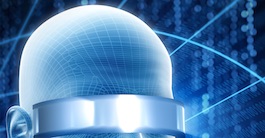Digital Culture and neuroscience: A conversation with learning and curriculum
 Multimedia digital technologies mirror neural processes and capacities and their proliferation introduce new possibilities for learning. Not only does the new digital media have the capacity to instantly record and communicate lifeworld experiences unimpeded by the distance or size of the targeted audience, but offers the means to construct virtual reality environments which were previously beyond human experience. This finds the teacher confronted with a new array of modes and an extended concept of literacy through which to engage the student in learning and meaning making. Digital culture and its multiliteracies now present challenges for the curriculum work of teachers, both in terms of the integration of appropriate technologies and the capitalization of the sensory and memory capacities of students. This article outlines the challenges faced by teachers as they engage in curriculum work that seeks to integrate the capabilities of our new digital culture in the design of learning experiences. It also highlights insights into human capacities for learning offered by neuroscience regarding the interplay of experience, memory, cognition, emotion and reflection in learning. By aligning these strands, teachers can develop curriculum that align with the capabilities of new digital technologies with the capacities of students.
Multimedia digital technologies mirror neural processes and capacities and their proliferation introduce new possibilities for learning. Not only does the new digital media have the capacity to instantly record and communicate lifeworld experiences unimpeded by the distance or size of the targeted audience, but offers the means to construct virtual reality environments which were previously beyond human experience. This finds the teacher confronted with a new array of modes and an extended concept of literacy through which to engage the student in learning and meaning making. Digital culture and its multiliteracies now present challenges for the curriculum work of teachers, both in terms of the integration of appropriate technologies and the capitalization of the sensory and memory capacities of students. This article outlines the challenges faced by teachers as they engage in curriculum work that seeks to integrate the capabilities of our new digital culture in the design of learning experiences. It also highlights insights into human capacities for learning offered by neuroscience regarding the interplay of experience, memory, cognition, emotion and reflection in learning. By aligning these strands, teachers can develop curriculum that align with the capabilities of new digital technologies with the capacities of students.







